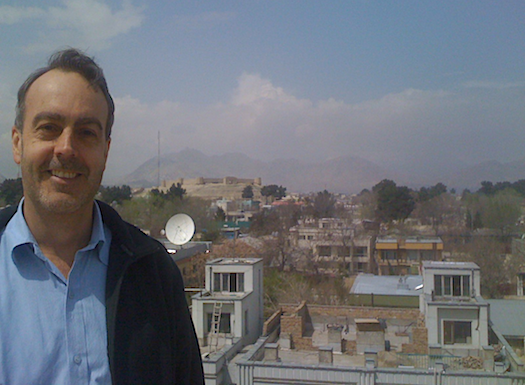In Australia, news is valued and journalism enjoys professional respect. But it’s not like that everywhere.
Speaking at Radio Alive 2017 Steve Ahern discussed the challenges of journalism in a dangerous world.
Alongside radioinfo, Steve also runs Ahern Media and Training, specialising in broadcast training, curriculum development and new media which has taken him to some of the ‘media-dark’ countries in the world including Afghanistan.
“A lot of the work I have been doing is working with media companies, not just radio, in a lot of countries where the media may be thriving but their level of sophistication is not that good.”
One of the jobs Steve has undertaken in Kabul was to help launch the Nai Media Institute, like AFTRS here in Australia.
It runs courses for both men and women despite a woman’s position in the industry being fragile.
“One of the ladies doing the course was a fantastic television news presenter and I thought great, you can be on TV when you finish this course and she said well no, if I ever did show my face on television my family would kill me, and she meant literally, so I will always be a producer but I am doing this course because maybe things will change and one day my daughter might be able to be on television.”
As part of Steve’s presentation he spoke about several journalists who had faced problems due to their reporting.
“Journalists like this have been hassled, attacked by Taliban or by Government thugs, trying to intimidate them into staying silent, or putting a certain spin on their reports,” says Steve.
According to a report by Nai in Afghanistan, in the last two years Taliban have threatened more than 300 journalists with death in four different locations in the country. In January 2016 Taliban killed 7 media staff in Kabul through a suicide attack and wounded 17 more. ISIS is also an enemy of free media. They have threatened a dozen journalists with death in the eastern Nangarhar province. ISIS claimed responsibility of an attack that took place in Nangarhar’s national radio and TV compound killing four media staff there. They also use a radio station named Khelafat to oppose human rights values, including freedom of expression and free media, they also threaten journalists. These terrorist groups, with their obvious positions are easy to identify, but there are also individuals among the government who are opposing free media and freedom of expression.
Steve has also worked in other countries where media is closely controlled.
“Places like that have interesting challenges. You have to think about security and when you talk about security in those places you are talking about people who are watching you. As an example, translators or tour organisers are really secret police. They are there to make sure I don’t say anything to corrupt the audience and they don’t tell me anything they shouldn’t tell a foreigner.
“The only good thing about them was they were excellent bureaucrats, they turned up at 9 in the morning and went home at 5 and then everyone else, who could pretty much speak perfect English would then come up and tell me what he didn’t translate and ask me questions like “can we really believe the BBC?” What’s this thing about balanced and honest broadcasting, we don’t understand that.”
Steve explains broadcasters in such countries are very keen to change the way they do their broadcasting in a place where they are very controlled, but they have to be careful.
“…they’ve taught me a lot of stuff too which I think is worthwhile passing on to journalists in our country because we never know when these skills might be needed sadly in this dangerous world,” says Steve.
Media are generally not primary targets. The terrorists want you to report the story.
“The big thing to remember is, for terrorists it’s a propaganda war as well as a physical war and for us as broadcasters we don’t want to fall into their trap.
“They want us to report what they have done and they want us to give their spin on it. So, journalists need to understand what terrorists are trying to achieve from their activities.”
A few tips from Steve include being aware that terrorists may be monitoring your broadcasts.
- Do not report police response plans.
- Cover the incident in pairs if possible.
- If you are in an area where police snipers may see you, call to identify yourself, or have your editor call police and inform them of your location.
- When you arrive at an incident, first check where there is cover in case you need it. Drop to the ground and crawl to cover if there is gunfire
Car bombs are a major threat. Look for car bombs by noticing cars with heavy loads in their boots. But the terrorists often know that we are looking for signs like this, so sometimes they will put in heavy duty suspension, so also look for new struts, new paintwork or new body work on the car as well.
Steve says he doesn’t usually like to put his work in the spotlight, but he thinks this is an important topic for media to consider at this time, so he was glad it has been raised for this conference.
“We are in a quandary as media.
“Of course we have to cover things that happen, but how we cover them is the key.. If you haven’t thought about that in your media organisation you need to. Ask yourself what you would do, then ask yourself, would the terrorists benefit from that, or would my staff be put in danger.”
Reporting: Kim Napier
Steve Ahern is the founding editor of this website.

